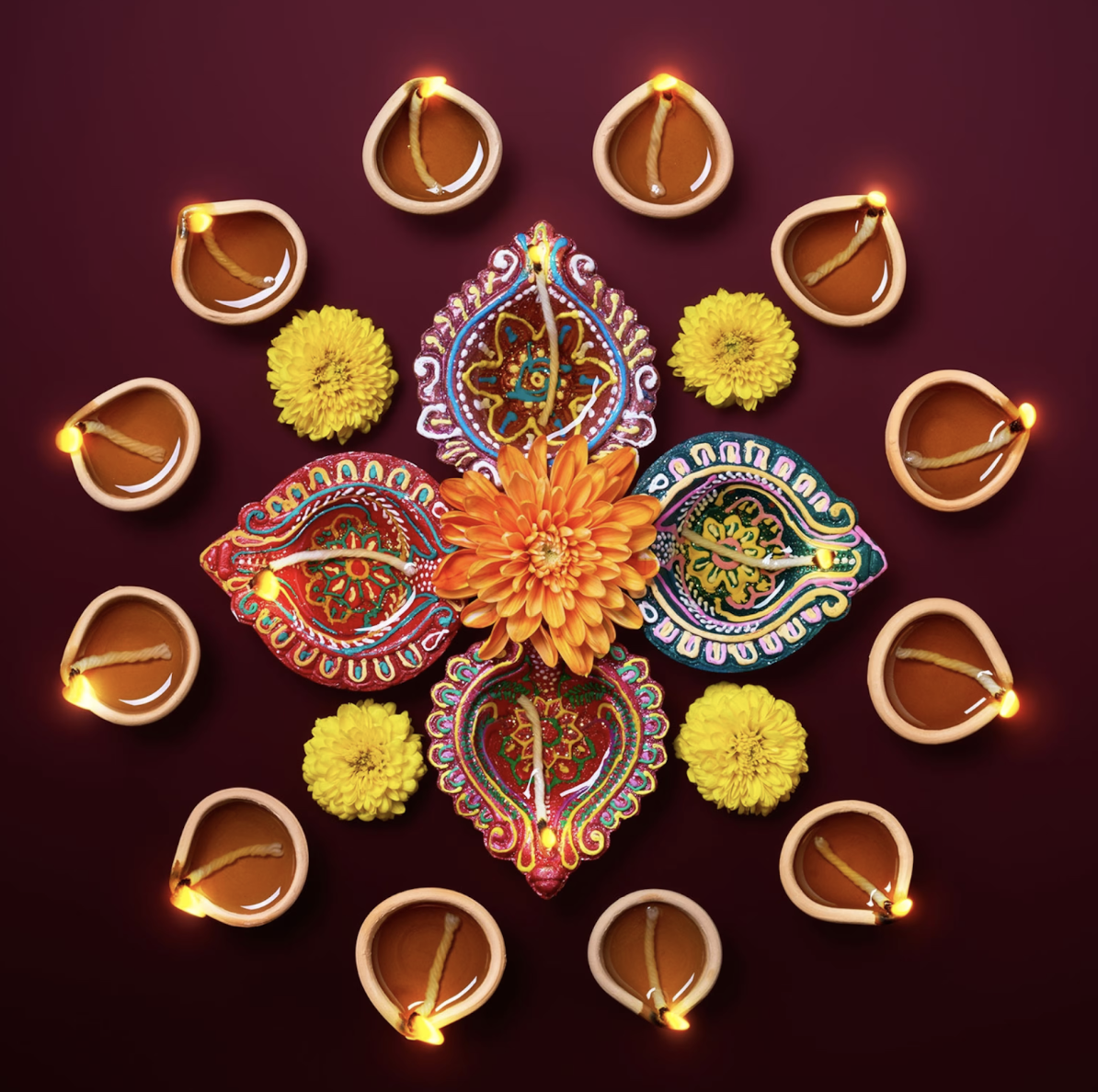By Emma Wertheimer, Year 9
Every year between October and November individuals from Sikh and Hindu communities all over the world come together to celebrate the religious festival of Diwali, which lasts typically 5 or 6 days. This year it starts on the 12th of November.
Diwali is a celebration during which more than a billion people pray, feast and decorate collectively to honour the Hindu goddess of prosperity and wealth, Lakshmi. It is also known as the Festival of Lights because of the decorations, which involve a lot of bright and colourful lighting. Feasts are also a big part of the celebration because as National Geographic describes, Diwali is a time “to celebrate the triumph of light over darkness, knowledge over ignorance, and good over evil.”
Family is very important during Diwali and it is usually a time for families to be together and to reunite. Food is also a major part of the holiday and families get together to share feasts all throughout the 5-6 days. One of the commonly eaten foods is “Mithai” which means sweets in Hindi. One example of a Mithai is “Gulab Jamun”(which means roseberry), a deep fried milk dough ball which is then soaked in rose flavoured sugar syrup. These very sweet specialities symbolise the sweetness of life that is being celebrated.
A typical Diwali festival (in India) is five days long. The first two days are devoted to getting ready for the third day, being the main celebration. Part of the preparation includes creating “rangoli” which are coloured designs made out of colourful powders, rice, flour and flower petals arranged in designs on the floor. The third day is the main event, during which prayers take place, lamps are lit and put outside and the traditional family feast takes place. Traditions for the fourth and fifth day vary depending on the region, however on the last day, sisters pray for their brothers and receive gifts and Mithai in exchange for their prayers.
The celebration of Diwali comes from Hindus and Sikhs honouring the goddess Lakshmi, as well as other gods and goddesses, over the span of the five days. As The Times of India states, during Diwali not only is the goddess Lakshmi worshipped, but so are “other deities like Lord Ganesha, Lord Kubera, and Goddess Saraswati.” Each god signifies and symbolises a different aspect of life. Gods and goddesses are often represented by symbols, each with a different meaning and representation. For example, the goddess Lakshmi is represented by a lotus, which signifies her beauty and purity. Another example is the goddess Saraswati, the goddess of knowledge and wisdom, who is symbolised by peacocks and swans.
In conclusion, Diwali is celebrated in many different ways, depending on each person and each family. The festival of lights is more than just a festival, it is a moment of sharing and a time for families to get together and reunite during five special days filled with activities and cultural celebrations. Diwali will be celebrated at LGB on Tuesday from 10:30-10:55 with a variety of activities and stalls.
National Geographic: https://www.nationalgeographic.com/history/article/diwali-history-customs-indian-festival-of-lights
Times of India: https://timesofindia.indiatimes.com/astrology/vastu-feng-shui/how-to-please-goddess-laxmi-this-diwali/articleshow/105119436.cms



